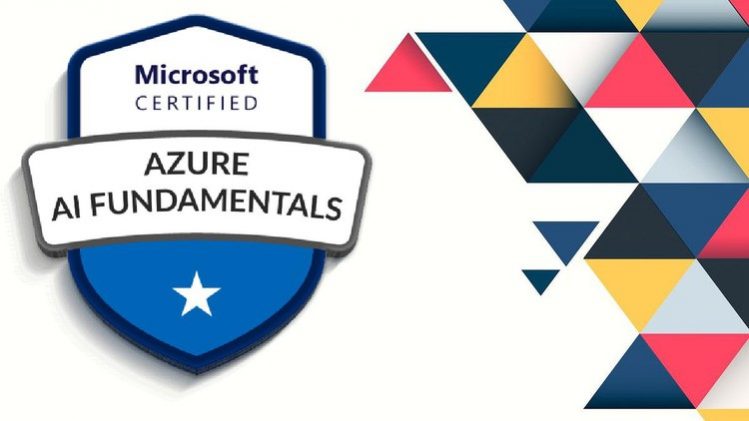
Prepare Azure AI Fundamentals (AI-900) certification
Get ready to pass the Azure AI Fundamentals (AI-900) exam
Test your knowledge in Azure AI Fundamentals (AI-900)
Full coverage of the Azure AI Fundamentals (AI-900) certification
Microsoft Certified: Azure AI Fundamentals AI-900
This exam is a chance to prove that you understand common ML and AI workloads and how to use Azure to implement them.
Candidates with both technical and non-technical backgrounds are encouraged to take this exam. It is not necessary to have experience in data science or software engineering, although it would be helpful to have some basic programming knowledge or experience.
Although it is not a requirement for any of them, Azure AI Fundamentals can be used to be ready for additional Azure role-based certifications like Azure Data Scientist Associate or Azure AI Engineer Associate.
Skills measured AI 900
- Describe AI workloads and considerations
- Describe fundamental principles of machine learning on Azure
- Describe features of computer vision workloads on Azure
- Describe features of Natural Language Processing (NLP) workloads on Azure
- Describe features of conversational AI workloads on Azure
In the past two years, Microsoft’s market share in cloud services has grown astronomically, and many businesses have begun their cloud migration. As a result, Azure credentials are highly acknowledged on the job market in addition to being highly sought for.
If you want to start working with machine learning and artificial intelligence as a data scientist, analyst, or engineer, you might think about getting certified with Microsoft Azure AI Fundamentals AI 900.
Topics covered in these practice exam:
-Fundamental principles of machine learning not limited to Azure (30-35%)
-Artificial Intelligence workloads (15-20%)
-Computer vision workloads on Azure (15-20%)
-Natural Language Processing (NLP) workloads on Azure (15-20%)
-Conversational AI workloads on Azure (15-20%)
Overview of AI
AI is the creation of software that imitates human behaviors and capabilities. Key elements include:
- Machine learning – This is often the foundation for an AI system, and is the way we “teach” a computer model to make predictions and draw conclusions from data.
- Anomaly detection – The capability to automatically detect errors or unusual activity in a system.
- Computer vision – The capability of software to interpret the world visually through cameras, video, and images.
- Natural language processing – The capability for a computer to interpret written or spoken language, and respond in kind.
- Conversational AI – The capability of a software “agent” to participate in a conversation.
Azure Machine Learning
The most of AI solutions are built on machine learning.
What Microsoft Azure provides is as follows: You may construct, manage, and publish machine learning models using the cloud-based Azure Machine Learning Service. The following capabilities and functions are provided by Azure Machine Learning:
Automated machine-learning: With the help of this feature, novices may quickly build machine learning models from data.
Azure Machine Learning designer: An interface that allows for no-code creation of machine learning solutions.
Data and compute management: Qualified data scientists have access to cloud-based computing and data storage resources to run code for large-scale data investigations.
Pipelines: To manage model deployment, training, and administration, software engineers, data scientists, and IT operations specialists can build pipelines.






